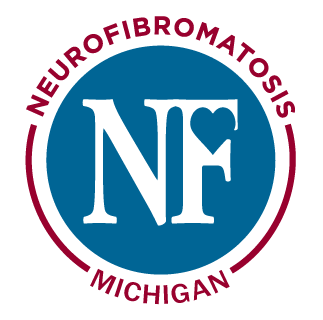What is NF?
Neurofibromatosis, also known as NF, is a genetic disorder of the nervous system that causes tumors to form on nerves anywhere in the body at any time. It is a progressive disorder that affects all races, all ethnic groups and both sexes equally. NF is the single most common genetic disorder of the nervous system, occurring in one in every 2500 to 3000 births. Despite its frequency, few people are familiar with NF.
There are three distinct forms of NF: NF1, NF2 and schwannomatosis. NF is unpredictable in its manifestations and its severity. There is no known cure NF, although the genes for NF1 and NF2 have both been identified. Currently, NF has no effective treatment other than the surgical removal of tumors which may sometimes grow back.
Diagnostic Criteria for NF2
Confirmed (definite) NF2 :
Bilateral vestibular schwannomas (VS)
Presumptive (probable) NF2 :
Family history of NF2 (first degree family relative) plus:
Unilateral VS or any two of the following:
meningioma, glioma, schwannoma, juvenile posterior subcapsular lenticular opacities/juvenile cortical cataract
Individuals with the following clinical features should be evaluated for NF2:
Unilateral VS plus at least two of any of the following: meningioma, glioma, schwannoma, juvenile posterior subcapsular lenticular opacities/juvenile cortical cataract
Multiple meningiomas (2 or more) plus unilateral VS or any two of the following: glioma, schwannoma, juvenile posterior subcapsular lenticular opacities/juvenile cortical cataract
Diagnostic Criteria for NF1
Two or more of the following:
Six or more café-au-lait spots 1.5 cm or larger in post-pubertal individuals, 0.5 cm or larger in pre-pubertal individuals
Two or more neurofibromas of any type or one or more plexiform neurofibroma
Freckling in the axilla or groin
Optic glioma (tumor of the optic pathway)
Two or more Lisch nodules (benign iris hamartomas)
A distinctive bony lesion: dysplasia of the sphenoid bone or dysplasia or thinning of long bone cortex
A first-degree relative with NF1



